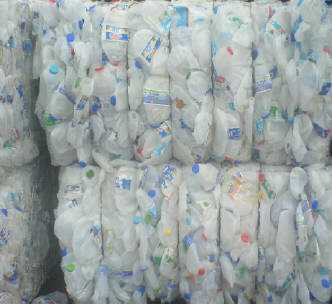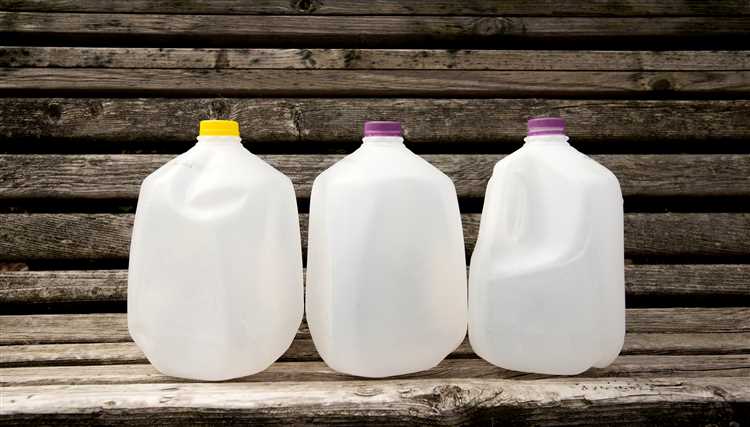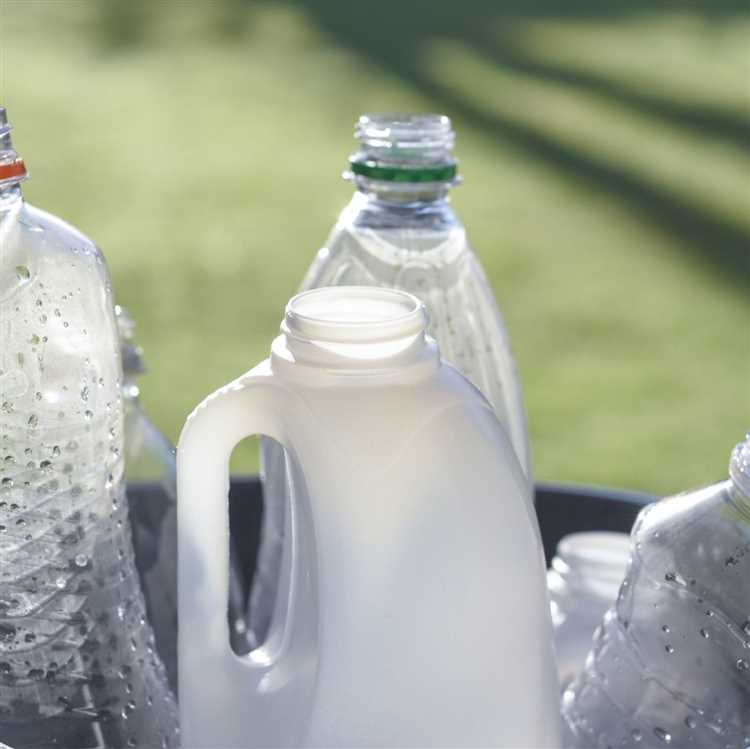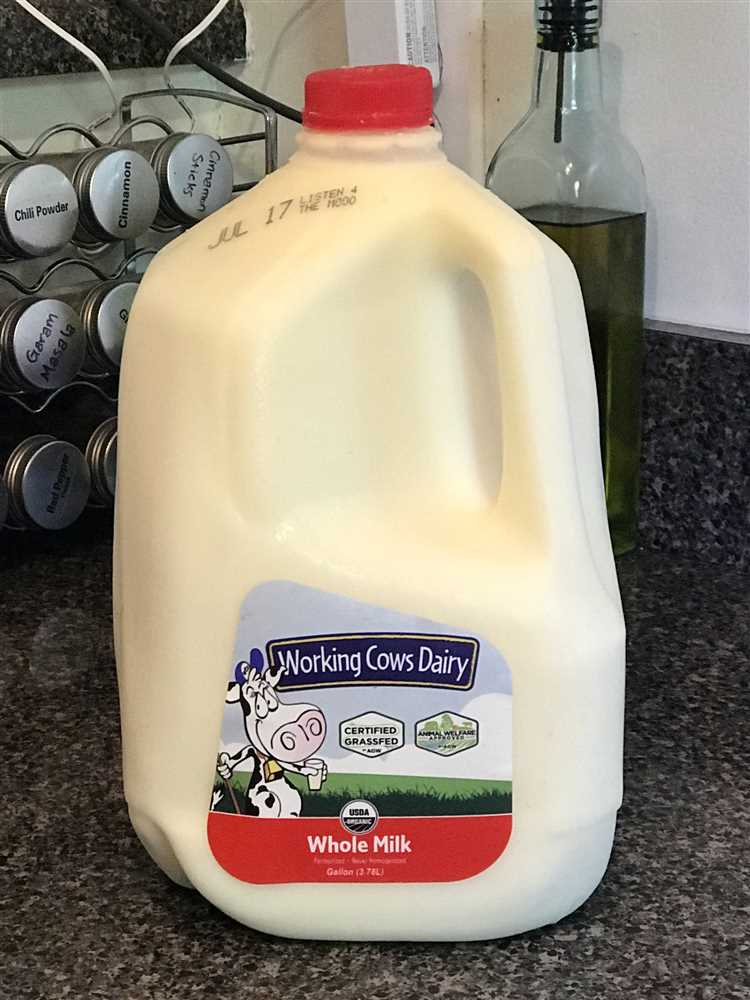
Plastic milk bottles are commonly used for storing and transporting milk. However, once they are empty, what should you do with them? The answer is simple: recycle! Recycling plastic milk bottles is not only good for the environment but also helps to conserve natural resources and reduce landfill waste.
Why should you recycle plastic milk bottles? Recycling is an essential part of sustainable living. By recycling your plastic milk bottles, you are helping to reduce the demand for new plastic, which is made from non-renewable resources such as crude oil. Additionally, recycling helps to prevent these bottles from ending up in landfills, where they can take hundreds of years to decompose.
How do you recycle plastic milk bottles? The first step is to check if your local recycling program accepts plastic bottles. Most recycling programs do, but it’s always best to double-check. Once you have confirmed that your bottles can be recycled, you can simply rinse them out and remove any plastic caps before placing them in your recycling bin. It’s important to note that different recycling programs may have specific guidelines, so it’s a good idea to familiarize yourself with your program’s rules.
What happens to recycled milk bottles? Once your plastic milk bottles are collected by your local recycling program, they will most likely be taken to a recycling facility. There, the bottles will be sorted by type and then cleaned and shredded into small pieces. These small plastic pieces, called “flakes,” can then be melted down and used to make new plastic bottles, as well as other plastic products such as toys, furniture, and even clothing.
In conclusion, recycling plastic milk bottles is a simple and effective way to contribute to a more sustainable future. By making the effort to recycle, you are not only helping the planet but also supporting the recycling industry and reducing the need for new plastic production. So, the next time you finish a plastic milk bottle, remember to rinse it out, remove the cap, and recycle it!
- Why Recycling Plastic Milk Bottles is Important
- 1. Environmental Impact
- 2. Conservation of Resources
- 3. Energy Savings
- 4. Reduction of Greenhouse Gas Emissions
- 5. Promoting a Circular Economy
- Environmental Impact
- Reducing Landfill Waste
- The Importance of Recycling Plastic Milk Bottles
- Tips for Reducing Landfill Waste
- Saving Energy and Resources
- Types of Plastic Milk Bottles
- High-Density Polyethylene (HDPE)
- Polyethylene Terephthalate (PET)
- High-Density Polyethylene (HDPE) Bottles
- 1. Recycling Symbol
- 2. Recycling Process
- 3. Recycling Benefits
- Polyethylene Terephthalate (PET) Bottles
- 1. Check for recycling symbols:
- 2. Rinse the bottles:
- 3. Remove the caps:
- 4. Flatten the bottles:
- 5. Recycle in designated bins or facilities:
- Polypropylene (PP) Bottles
- Q&A,
- Can plastic milk bottles be recycled?
- Are plastic milk bottles accepted in all recycling programs?
- What should I do before recycling plastic milk bottles?
- What happens to recycled plastic milk bottles?
- Can I recycle plastic milk bottles with other types of plastic?
- Can plastic milk bottles be recycled?
- What can plastic milk bottles be recycled into?
Why Recycling Plastic Milk Bottles is Important
Recycling plastic milk bottles is crucial for several reasons:
1. Environmental Impact
By recycling plastic milk bottles, we can significantly reduce the amount of waste that ends up in landfills or pollutes our natural environment. Plastic takes hundreds of years to decompose, and even when it does, it releases harmful chemicals into the soil and water.
2. Conservation of Resources
Plastic milk bottles are made from a non-renewable resource – oil. By recycling these bottles, we reduce the need for virgin plastic production and conserve valuable resources. This helps to minimize the environmental impact of extracting and processing oil.
3. Energy Savings
Recycling plastic milk bottles requires less energy compared to producing new bottles from virgin plastic. This is because the recycling process involves melting down the plastic and reshaping it, while producing new bottles requires the extraction, refinement, and manufacturing processes of oil.
4. Reduction of Greenhouse Gas Emissions
The production of plastic milk bottles contributes to greenhouse gas emissions, which contribute to climate change. By recycling these bottles, we can reduce the emissions associated with the production and transportation of new bottles, helping to mitigate the effects of climate change.
5. Promoting a Circular Economy
Recycling plastic milk bottles supports the concept of a circular economy, where materials are reused and recycled rather than being discarded after a single use. By participating in the recycling process, we contribute to a sustainable system that reduces waste and preserves resources for future generations.
In conclusion, recycling plastic milk bottles is important because it helps to protect the environment, conserve resources, save energy, reduce greenhouse gas emissions, and promote a circular economy. By making a conscious effort to recycle these bottles, we can make a positive impact on our planet and create a more sustainable future.
Environmental Impact
Recycling plastic milk bottles has a significant environmental impact. By recycling these bottles, we can help reduce the amount of plastic waste that ends up in landfills or pollutes our oceans and other natural habitats.
When plastic milk bottles are recycled, they are processed and transformed into new plastic products. This reduces the need for new plastic production, which saves energy and resources. Recycling one ton of plastic milk bottles can save around 3.8 barrels of oil, 30 cubic yards of landfill space, and 5,774 kilowatt-hours of electricity.
Furthermore, recycling plastic milk bottles helps to reduce greenhouse gas emissions. The production of plastic requires the extraction and processing of fossil fuels, which contributes to carbon dioxide emissions and climate change. By recycling plastic, we can reduce the demand for new plastic production, thereby reducing greenhouse gas emissions.
Recycling plastic milk bottles also helps to conserve natural resources. Plastic is made from non-renewable resources, such as petroleum and natural gas. By recycling plastic, we can extend the lifespan of these resources and reduce our reliance on them.
In addition to its positive environmental impact, recycling plastic milk bottles also has economic benefits. It creates jobs in the recycling industry and reduces the costs associated with waste management and disposal.
In conclusion, recycling plastic milk bottles has a significant environmental impact. It helps to reduce plastic waste, greenhouse gas emissions, and the consumption of natural resources. By recycling these bottles, we can contribute to a more sustainable and eco-friendly future.
Reducing Landfill Waste
As more and more plastic milk bottles are discarded, they contribute to the growing problem of landfill waste. Landfills are quickly filling up with non-biodegradable materials, such as plastic, leading to adverse environmental effects.
The Importance of Recycling Plastic Milk Bottles
Recycling plastic milk bottles is an effective way to reduce landfill waste. By recycling these bottles, we can not only save space in landfills but also conserve valuable resources and reduce pollution.
Tips for Reducing Landfill Waste
Here are some tips to help reduce landfill waste:
- Recycle plastic milk bottles: Make sure to properly clean and sort plastic milk bottles for recycling. Check with your local recycling facility for specific guidelines.
- Reduce consumption: Opt for reusable alternatives, such as glass bottles or refillable containers, to reduce the overall use of plastic milk bottles.
- Support recycling initiatives: Encourage and support local recycling programs and initiatives in your community.
- Compost organic waste: Instead of throwing away food scraps and other organic materials, start composting to reduce the amount of waste sent to landfills.
- Donate or repurpose: Instead of throwing away items that are still in good condition, consider donating or repurposing them to reduce landfill waste.
- Spread awareness: Educate others about the importance of reducing landfill waste and encourage them to take action.
By implementing these tips, we can all contribute to reducing landfill waste and creating a more sustainable future.
Saving Energy and Resources

Recycling plastic milk bottles not only helps to reduce waste, but also plays a crucial role in saving energy and preserving valuable resources. The process of recycling plastic milk bottles requires significantly less energy compared to producing new ones from scratch.
By recycling plastic bottles, we can reduce the demand for raw materials such as petroleum, which is the primary component of plastic. This reduces the need for extracting and refining petroleum, which is an energy-intensive process. Additionally, recycling plastic milk bottles helps to conserve water resources, as the production of plastic bottles requires large amounts of water.
When we recycle plastic milk bottles, we also save resources by extending the life cycle of the materials. Instead of being discarded in landfills or incinerated, the plastic is transformed into new products, which reduces the need for new materials. This conserves resources and reduces the environmental impact associated with extracting and manufacturing new materials.
In addition to saving energy and resources, recycling plastic milk bottles also helps to reduce greenhouse gas emissions. The production of new plastic from raw materials releases a significant amount of greenhouse gases into the atmosphere. By recycling, we can reduce the need for new plastic production, thereby lowering greenhouse gas emissions and combating climate change.
In conclusion, recycling plastic milk bottles is an effective way to save energy and resources. By reducing the demand for new plastic production, we can conserve valuable resources, reduce energy consumption, and minimize environmental impact. It is essential for individuals and communities to actively participate in recycling efforts to maximize the benefits for both present and future generations.
Types of Plastic Milk Bottles
Plastic milk bottles are commonly made using various types of plastic. It is important to know the different types of plastics used in milk bottles as it can affect their recyclability and environmental impact.
High-Density Polyethylene (HDPE)
Most plastic milk bottles are made from HDPE, which is a type of plastic known for its durability and strength. HDPE milk bottles are easily recyclable and are commonly accepted by recycling facilities. They are often marked with the recycling symbol with the number 2 inside, indicating the type of plastic used.
Polyethylene Terephthalate (PET)
Sometimes, milk bottles may also be made from PET, a type of plastic commonly used for water and soda bottles. PET milk bottles are lightweight and have good barrier properties, which helps to preserve the freshness of the milk. However, PET milk bottles can be more challenging to recycle compared to HDPE milk bottles. They are often marked with the recycling symbol with the number 1 inside.
It is important to note that not all milk bottles are recyclable, especially if they are made from other types of plastic or if they have additional layers such as plastic film or foil. It is best to check with your local recycling facility to see what types of milk bottles they accept.
When recycling plastic milk bottles, it is important to rinse them out thoroughly and remove any caps or lids. This helps to ensure that the recycling process is more efficient and reduces contamination.
By understanding the different types of plastic milk bottles and their recyclability, we can make more informed choices and contribute to a more sustainable future.
High-Density Polyethylene (HDPE) Bottles
High-Density Polyethylene (HDPE) bottles are a common type of plastic milk bottles that can be recycled. HDPE is a durable and strong plastic material, making it suitable for containing milk and other liquid products.
Here are some important things you need to know about recycling HDPE bottles:
1. Recycling Symbol
HDPE bottles are typically labeled with a recycling symbol consisting of a triangle with the number 2 inside. This symbol indicates that the bottle is made from HDPE and can be recycled.
2. Recycling Process

The recycling process for HDPE bottles involves several steps:
- Collection: HDPE bottles are collected through recycling programs, curbside recycling, or drop-off centers.
- Sorting: The collected bottles are sorted based on their plastic type, including HDPE.
- Washing: The sorted HDPE bottles are thoroughly washed to remove any residue or contaminants.
- Shredding: The cleaned bottles are then shredded into small pieces.
- Melting: The shredded HDPE is melted down and formed into pellets or flakes.
- Remolding: The melted HDPE material can be used to make new bottles or other plastic products.
3. Recycling Benefits
Recycling HDPE bottles offers several benefits:
- Conservation of Resources: Recycling HDPE bottles helps conserve natural resources, as it reduces the need for new plastic production.
- Energy Savings: The recycling process requires less energy compared to producing new plastic.
- Reduction in Landfill Waste: By recycling HDPE bottles, you can help reduce the amount of plastic waste that ends up in landfills.
- Environmental Impact: Recycling plastic bottles helps reduce pollution and the release of greenhouse gases.
Overall, recycling HDPE bottles is an important step in promoting a more sustainable and environmentally friendly approach to waste management.
Polyethylene Terephthalate (PET) Bottles
Polyethylene Terephthalate (PET) bottles are one of the most commonly used types of plastic milk bottles. PET is a lightweight, durable, and transparent plastic that is widely used for packaging beverages, including milk.
When it comes to recycling PET bottles, it is important to follow the proper guidelines to ensure they can be effectively recycled and reused. Here are some key points to know about recycling PET bottles:
1. Check for recycling symbols:
Before recycling a PET bottle, make sure it has the recycling symbol on the bottom. The symbol consists of a triangle made from three arrows, with a number inside. PET bottles are typically labeled with the number 1 inside the recycling symbol.
2. Rinse the bottles:
Prior to recycling, rinse the PET bottles with water to remove any residual milk or contaminants. This will help prevent contamination of other materials during the recycling process.
3. Remove the caps:
Remove the plastic caps from PET bottles before recycling them. The caps are usually made from a different type of plastic, and including them can disrupt the recycling process.
4. Flatten the bottles:
Flatten the PET bottles to save space in recycling bins and transportation. This will also help ensure that they are properly sorted and processed at recycling facilities.
5. Recycle in designated bins or facilities:

Place the rinsed and flattened PET bottles in the designated recycling bins or take them to recycling facilities in your area. PET bottles can typically be recycled alongside other plastic containers, but it’s always best to check with your local recycling guidelines.
By following these guidelines, you can help ensure that PET bottles are effectively recycled and contribute to the reduction of plastic waste.
Polypropylene (PP) Bottles
Polypropylene, also known as PP, is a type of plastic that is commonly used to make milk bottles. It is a durable material that is resistant to heat and chemicals, making it well-suited for packaging milk.
Polypropylene bottles are often translucent or opaque in appearance, which helps to protect the milk from light exposure. This can help prevent the breakdown of nutrients and maintain the freshness of the milk.
When it comes to recycling polypropylene milk bottles, it’s important to check with your local recycling facility to see if they accept this type of plastic. Some recycling programs may not accept certain types of plastics, so it’s best to double-check.
If your local recycling facility does accept polypropylene bottles, make sure to rinse them out before recycling. Removing any residual milk or liquid from the bottles can help ensure a higher quality of recycled plastic.
Recycling polypropylene bottles is an important step towards reducing waste and protecting the environment. By giving these bottles a second life, we can help conserve resources and reduce the amount of plastic ending up in landfills or polluting our oceans.
Remember: Always check with your local recycling facility for specific guidelines on how to recycle polypropylene milk bottles in your area.
Together, we can make a difference in creating a more sustainable future.
Q&A,
Can plastic milk bottles be recycled?
Yes, plastic milk bottles can be recycled. They are made from high-density polyethylene (HDPE) which is a recyclable material.
Are plastic milk bottles accepted in all recycling programs?
While most recycling programs accept plastic milk bottles, it’s always best to check with your local recycling center or municipal waste management facility to ensure they are accepted in your area.
What should I do before recycling plastic milk bottles?
Before recycling plastic milk bottles, it’s important to rinse them out to remove any leftover milk or other liquids. Remove the caps and labels as well, as these are often made from different types of plastics and can contaminate the recycling process.
What happens to recycled plastic milk bottles?
Once plastic milk bottles are recycled, they are typically sorted, cleaned, and shredded into small flakes. These flakes can then be melted down and used to create new plastic products, such as bottles, containers, and even clothing.
Can I recycle plastic milk bottles with other types of plastic?
Generally, it’s best to separate different types of plastic for recycling. However, plastic milk bottles are typically made from a specific type of plastic (HDPE) and can usually be recycled separately or with other HDPE products.
Can plastic milk bottles be recycled?
Yes, plastic milk bottles can be recycled. They are typically made from high-density polyethylene (HDPE) plastic, which is one of the most widely accepted and recyclable types of plastic. Recycling plastic milk bottles helps to reduce waste and conserve resources.
What can plastic milk bottles be recycled into?
Plastic milk bottles can be recycled into a variety of products. The recycled HDPE plastic can be used to make new bottles, containers, plastic lumber, and even textiles. Recycling plastic milk bottles helps to close the loop and reduce the need for virgin plastic production.